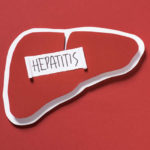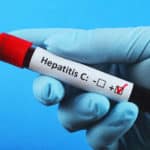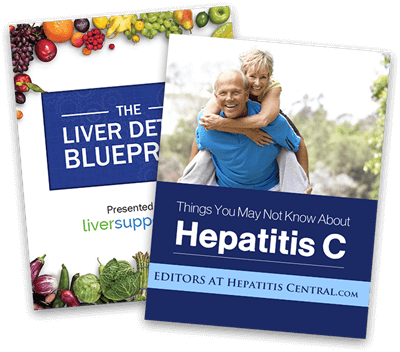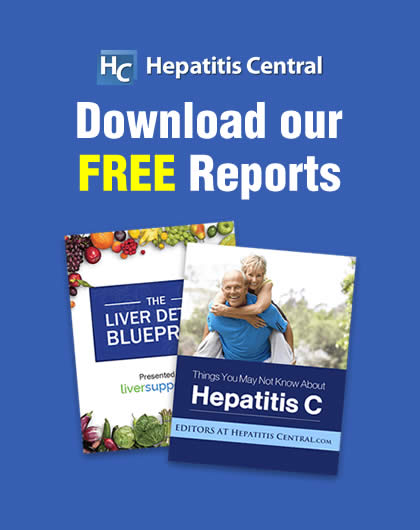Hepatitis C and Porphyria Cutanea Tarda
Hepatitis C is a viral infection of the liver. However, this disease commonly causes extrahepatic manifestations – problems that go beyond the liver. Believed to be 12 times more likely to affect Americans with Hepatitis C compared with the general population, Porphyria Cutanea Tarda (PCT) is a skin disease that does not yet have a cure. Even though there is no way to eliminate PCT, those affected can find solace by knowing about the effective ways one can manage this skin condition.
Understanding Porphyria Cutanea Tarda
Caused by an excess of porphyrins in the blood, porphyria defines a group of diseases. Some of the substances involved in porphyria are described below:
- Porphyrins are complex molecules that combine with iron to produce heme.
- Heme is responsible for giving blood its red color.
- Heme combines with globin to form hemoglobin.
- Hemoglobin is a protein in red blood cells that carries oxygen.
One of the most common types of porphyria, PCT is triggered by a deficiency of an enzyme called uroporphyrinogen decarboxylase (UROD). With less UROD, excessive amounts of a certain protein (uroporphyrinogen) accumulate in the blood and urine. Too much uroporphyrinogen results in an abnormal production of heme.
While PCT is most frequently caused by Hepatitis C infection, it can also be caused or triggered by the following:
- Hemochromatosis (accumulation of iron in the liver)
- Heavy alcohol use
- Estrogen therapy (oral contraceptives, prostate cancer treatment)
- Other viral infections (like HIV)
- Smoking
- A genetic deficiency of UROD
PCT Symptoms
Although PCT is due to a problem in the production of blood, its symptoms are mostly confined to the skin. In general, there are four recognizable symptoms of PCT:
- Blisters – The most common symptom of PCT is blistering that occurs after exposure to the sun. Painful blisters usually appear on the face, hands and arms as these areas tend to be more exposed. Resulting blisters crust over and take longer than normal to heal, causing scabs and scars.
- Easily Injured Skin – Those with PCT have delicate skin that is prone to injury, regardless of sun exposure. Bruises form easily and light scratches or burns last longer than expected, and typically leave scars.
- Skin Pigmentation – Becoming either very light or very dark, pigmentation changes commonly occur with PCT.
- Abnormal Hair Growth – Loss of hair on the scalp and increased growth of facial hair is common in both men and women with PCT. Although this abnormal pattern of hair growth can be seen in other illnesses, it is very common with in those with PCT.
PCT Management
Despite its lack of a cure, PCT is considered to be one of the easiest porphyrias to manage. Most experts agree that this Hepatitis C extrahepatic manifestation can be managed well by combining the following approaches:
- Phlebotomy – Phlebotomy is the removal of blood from the body – and it ends up reducing iron levels in the liver. By reducing iron, porphyrins can return to normal levels.
- Sun Protection – Porphyrins absorb radiant energy most efficiently at very long ultraviolet and visible light wavelengths. Thus, those with PCT are advised to avoid the sun when possible, and use sunscreen and protective clothing (gloves, hats, pants and long-sleeved shirts) when outside.
- Anti-Malaria Drugs – Low doses of chloroquine or hydroxychloroquine can remove excess porphyrins from the liver. However, doses that are too high cause porphyrins to be removed too rapidly, resulting in a temporary worsening of PCT and damage to the liver.
- Iron Awareness – Foods containing iron are usually not a significant aggravator of PCT, but iron-containing dietary supplements should definitely be avoided. In addition, adequate amounts of dietary Vitamin C should be consumed because it helps the body absorb iron.
- Avoid Triggers – Alcohol is known to be a PCT trigger. Besides alcohol’s ability to exponentially worsen Hepatitis C infection and cause liver damage, it can aggravate PCT. In addition, smoking cigarettes or voluntarily taking an estrogen containing substance (like birth control pills) can bring on a PCT episode.
- Antiviral Treatment – By treating Hepatitis C with interferon plus ribavirin therapy, those with PCT often experience a decrease in skin lesions.
Despite being relatively uncommon, PCT is more likely to occur in those with Hepatitis C. For those with Porphyria Cutanea Tarda, there is not yet a way to increase UROD enzyme production. However, there are a handful of approaches those with Hepatitis C can use to manage this skin condition – including several that can be accomplished without a physician’s prescription.
References:
http://emedicine.medscape.com/article/1103643-followup, Porphyria Cutanea Tarda: Follow-up, Maureen B Poh-Fitzpatrick, MD, Retrieved October 24, 2009, Medscape, 2009.
http://www.corrections.com/news/article/22321-hepatitis-c-associated-skin-conditions, Hepatitis C Associated Skin Conditions, Retrieved October 23, 2009, The Corrections Connection, October 2009.
http://www.ehow.com/about_5054874_symptoms-porphyria-cutanea-tarda.html, The Symptoms of Porphyria Cutanea Tarda, Trisha Bartle, Retrieved October 24, 2009, eHow Inc., 2009.
http://www.hcvadvocate.org/hepatitis/factsheets_pdf/PCT.pdf, Extrahepatic Manifestations: Porphyria Cutanea Tarda (PCT), Alan Franciscus, Retrieved October 24, 2009, Hepatitis C Support Project, December 2007.
http://www.springerlink.com/content/pu32t71306276763/, Management of hepatitis C virus in patients with porphyria cutanea tarda, Peter W. M. Dienhart and Richard K. Sterling, Retrieved October 24, 2009, Current Hepatitis Reports, August 2005.








6 Comments
Bom artrigo,esclarece bastante sobre o assunto, que nem sempre [e clarificado por médicos com pouca experiencia em hepatite. Devemos compreender que os especialistas concentram-se nas grandes cidades urbanas…Obriga, ajudou bastante a mim como enfermeira e doente com Hepatite c. Sonia Maria Goes
I found out that I had hep c after first being diagnosed with PCT, I had been suffering with blistering of the hands and very fragile skin for well over a year, I had also noticed fine downy hair growth, mainly on the sides of the face, I made repeated trips to the doc’s… to be told, that it was impetigo , or it was due to the menopause. Eventually after a holiday in the sun and a very bad break out of blistering I made the connection myself…, that the sun was causing the blistering…. thus in due cause getting the PCT diagnosis. My iron levels were checked and found to be only slightly higher than normal, I was put on low dose hydroxyclorquinine…. just two tablets a week… initially the blistering did worsen…. proberbly for the first three months. I avoided the sun and used factor 50 sun cream when I went outdoors. also I had virtually no alcohol. After about six month’s the blistering had stopped… It is now ten month’s since diagnosis, I still take the hydroxyclorquinine, my hand’s are almost back to normal, they no longer split at the slightest knock and the scar’s are fading. I was never sure if I would be able to tolerate the sun again, but am gradually spending more time outside and I have been fine. (I do still use sunscreen but only on a bright day) The hep c was discovered during the blood tests and as I wasn’t a big drinker etc, it was possibly what had caused my PCT to kick off, I shall soon be starting treatment and am not looking forward to that……………………..
But for anyone diagnosed with PCT, I just wanted to say that it does get better and you are able to continue doing all the things you did before…..
Hello, I too have PCT. The dermatologist took one look at my face and said it was from liver diseases as Hep C. without me telling her that I had been diagnosed 3 days prior with it. My face looks terrible and I have hair growing on my forehead and both sides. I also have horrible painful blisters all over my hands. 3 more just this morning (no sun either)…my hands hurt so bad and I can barely stand it….cant get into Dr for Hep C till January and I have no insurance….Very scared…
Sorry that your suffering with the PCT Kathy, I remember only too well just how depressing and debilitating it was, just being frightened to do anything which may cause me to knock my hand’s. It’s a pity they have not started you on the hydroxyclorquinine (My derm put me on it, just two tablet’s a week, I took one on a tuesday morning and the other one on Friday’s, one box of 48 tablet’s lasted month’s……………..) she wanted me to treat the PCT before I saw the Hep C specialist.
I am in the UK …….. So I guess thing’s are pretty different for you, but I do hope that you will soon get access, to the treatment you need .
It is well over a year since I posted about the PCT, and a lot has happened since then , I have now completed treatment for the Hep c…was undetected at the end and am now awaiting my six month post treatment results.(finger’s crossed for a SVR) The PCT never came back (even while on treatment)….hand’s face etc look perfectly normal.. even the vivid red scar’s from the sore’s have gone.
Again….I really do hope that you get some help soon…..sending my best wishes.
I think that I have PCT don’t know yet if I have Hep C. I have had lesions on my hands and arms for over 10 years and did not know what they were. I just found out that I was exposed to toxic chemicals while stationed at Camp Lejeune North Carolina in the 80’s. The chemicals cause liver damage which can lead to PCT. Obama signed into law in 2012 the “Helping Families of Camp Lejeune Act” that provides health coverage for the affected Marines. PCT is listed as a known symptom of Agent Orange. My email is sharonhauk@yahoo.com . I would love to hear from jay or any others about their experience and treatment. Also would like to know if anyone has used a blacklight to view their lesions, it reveals all of the previous damage.
I have PCT and have had 7 phlembotomies. My Ferritin
started at 809 and its down to 46 yesterday. The problem is that the blisters
are not stopping. I have them on both hands and they are so sore, I cant stand
it. I’m HCV geno 1A and viral load over 3 million…I’m waiting to get insurance
to ok the drugs to start my treatment, but nothing yet. I’m very frustrated and
just want to cry…On top of all that, my face is very dark and I have hair
growing on the sides of my face…My Grandkids keep asking me what is wrong with
me….I’m so over this…